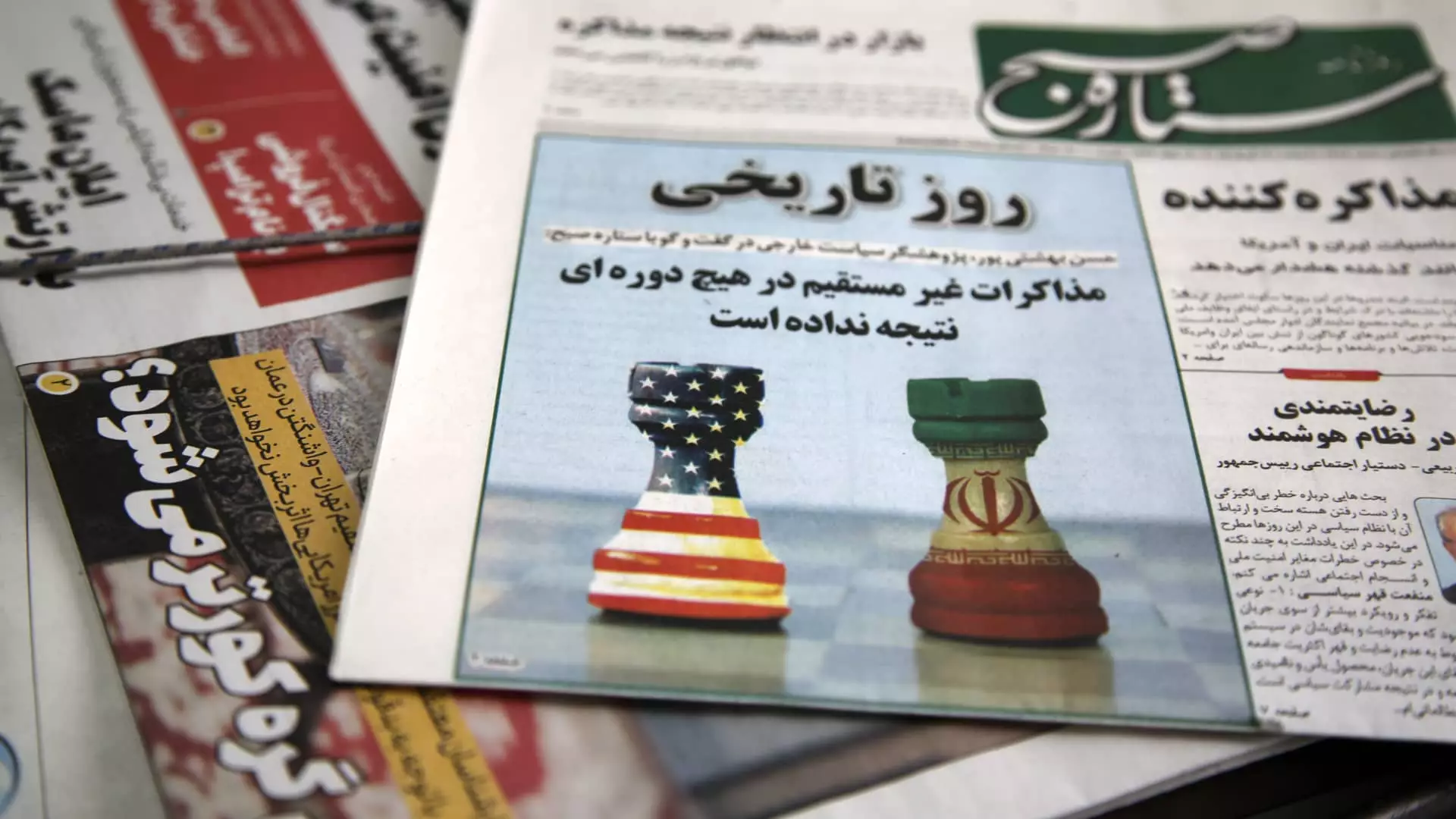The upcoming nuclear talks between Iran and the United States mark another chapter in a convoluted saga filled with threats, mistrust, and political maneuvering. Set against a backdrop of heightened tensions, President Donald Trump’s rhetoric looms as a dark cloud over negotiations aimed at resolving longstanding disputes regarding Iran’s nuclear ambitions. The two countries, which have seen their relationship plunge to unprecedented lows, are opting for an indirect approach through mediators from Oman. While both sides express tentative optimism, the stakes are incredibly high and the path forward fraught with challenges.
The delicate framework of these negotiations raises critical concerns. The U.S. is adamant that Iran must halt its production of highly enriched uranium—a critical component for a nuclear weapon—while Tehran continues to assert that its nuclear program is inherently peaceful. Herein lies the crux of the matter: the lack of mutual trust, exacerbated by Trump’s decision to abandon the 2015 nuclear deal in favor of a “maximum pressure” campaign. This recent history of abrogation complicates any potential rapprochement, and both sides remain wary of the other’s commitment to upholding agreements.
Iran’s Calculated Caution
Iran’s Supreme Leader Ayatollah Ali Khamenei has articulated a tempered stance, stating he is “neither overly optimistic nor pessimistic.” This ambivalence reflects a broader strategic calculation on Iran’s part, especially in light of ongoing sanctions that have severely hampered its economy. As negotiations commence, officials in Tehran are duly cautious about the pace and content of any potential agreement, having witnessed the fallout from unfulfilled assurances in the past.
Notably, Iranian officials have delineated their red lines, which include retaining their uranium enrichment capabilities and declining to negotiate over crucial defense systems like their missile program. This position underscores the broader ideological divide between Tehran and Washington, revealing a fundamental disagreement not only over nuclear ambitions but also about regional security and influence. The extensive armory that Iran has developed over years—whether nuclear or conventional—represents not merely a bargaining chip but an integral part of its national identity and regional posture.
Trump’s Tough Talk vs. Diplomatic Reality
President Trump’s rhetoric about preventing Iran from acquiring nuclear weapons illustrates a resolute position but offers little in practical terms for diplomacy. His statement that “Iran cannot have a nuclear weapon” strikes a tough but ultimately unhelpful note. While asserting a desire for Iran to become “great and prosperous,” Trump has also imposed crippling sanctions that have done little but deepen hostilities and validate Iran’s suspicions regarding U.S. intentions. The juxtaposition of promoting Iranian prosperity while simultaneously applying a stranglehold on its economy exists in stark contradiction, revealing a serious disconnect between stated goals and actionable policies.
Such dynamics are not only frustrating but pivotal when considering the veiled threats of U.S. military action should diplomacy falter. This posture only serves to fuel Iran’s sense of insecurity and entrenches its hardened negotiating stance. With both sides claiming a desire for dialogue while simultaneously fortifying their respective positions, the road to a sustainable agreement seems riddled with obstacles.
The Role of Regional and Global Powers
While the United States and Iran grapple with their issues directly, other nations, notably Russia, have expressed their willingness to mediate. Russia’s interest in facilitating dialogue suggests that the nuclear impasse is not solely an Iran-U.S. issue; rather, it extends into the broader geopolitical landscape where global influence and regional alliances come into sharp focus. Additionally, the involvement of countries like Oman as intermediaries illustrates a clever diplomatic strategy, highlighting the potential benefits of third-party mediation in conflict resolution.
The participation of other nations also complicates the negotiations, as their interests may not align seamlessly with those of Tehran or Washington. As the talks unfold, the multifaceted nature of international relations will play a critical role in shaping outcomes, potentially steering the parties toward agreements that might not be on the table in a direct bilateral format.
Ultimately, the urgency of resolving the nuclear standoff is palpable, yet the possibility of a lasting agreement feels distant. Distrust remains the main barrier to progress, compounded by a legacy of miscalculation and miscommunication. The current negotiations could either foster a path toward de-escalation or plunge the parties back into an even deeper cycle of antagonism—each choice carrying profound implications for global security and stability.

